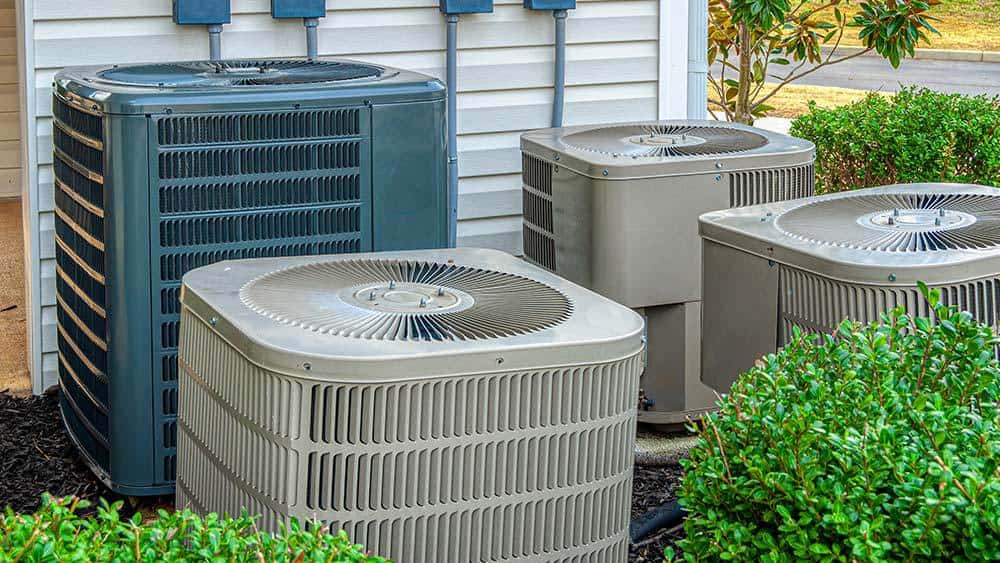
Key Takeaways
- An HVAC system provides heating, ventilation, and air conditioning to maintain the indoor climate.
- It is composed of several key components that work together for optimal performance.
- There are various types of HVAC systems – split, packaged, ductless, and hybrid systems.
Drenching summer or freezing cold winter, we rely on our HVAC systems to provide a comfortable environment all year round! This, however, means that your HVAC system is also going to be consuming a lot of energy throughout the year. The US homes’ energy consumption is more than 50% for only heating and cooling purposes!
Running an air conditioning unit is a significant expense, making it extremely important to understand how your HVAC system works and how you can get the best out of it every season.
Whether you are a homeowner trying to figure out the issue somewhere in your HVAC unit or a new technician learning the basics, understanding the system can be quite beneficial.
- What Is an HVAC System?
- Essential HVAC Components
- How Does an HVAC System Work?
- Types of HVAC Systems
- Difference Between HVAC & Air Conditioning
- How Much Is a New HVAC System?
- What Is a Smart HVAC Unit?
- How Can You Make Your HVAC Smart?
- Benefits of Having a Smart HVAC Unit
- How Long Do HVAC Systems Last?
- Tips for Maintaining Your HVAC Unit
What Is an HVAC System?
You might have heard of air conditioning as this term is commonly used, but you may not be familiar with the acronym HVAC.
HVAC is a broad term that stands for heating, ventilation, and air conditioning. In summers, the air conditioning can keep you cool and relaxed, while in winters, you can count on your furnace or heat pump to keep you nice and cozy.
Essential HVAC Components
An HVAC system is a combination of many parts working together. To keep your unit running smoothly, understanding the purpose and functionality of various components can be helpful.
So, let’s dive right in to explore some of the basic components of your HVAC system:
1. Refrigerant
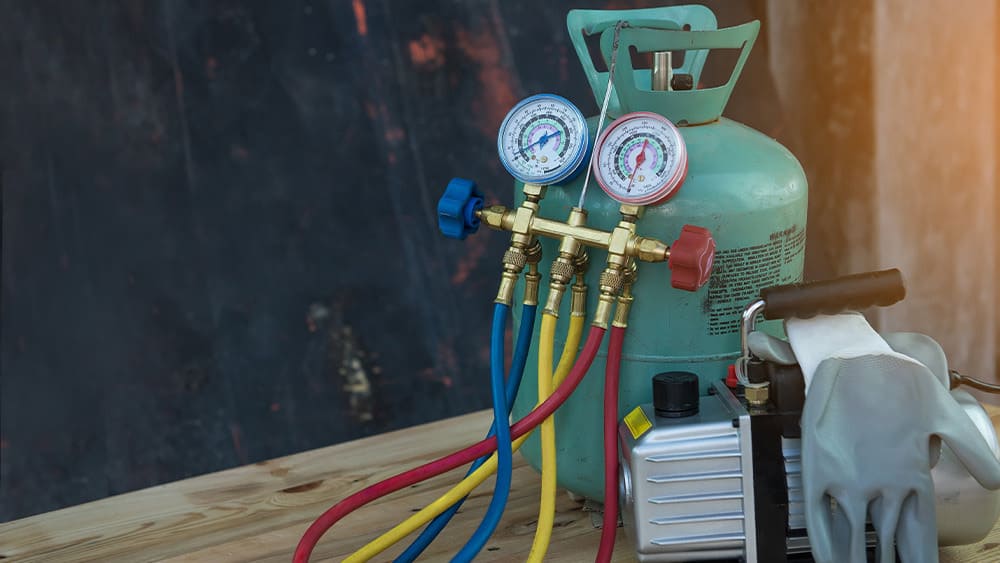
There would not be any air conditioning without an AC refrigerant.
It is the working fluid and perhaps the most crucial component of your HVAC unit. The refrigerant absorbs the heat and provides cool air to your home. When operated in reverse in winters, it absorbs heat from the outside environment and ejects it into the home. It is what carries the heat around.
In modern models, the refrigerant used is R410A. However, R134 hydrofluorocarbons (HFCs) are widely used too, it is now getting banned. Previously, R-22 and R-12 were used, but concerns that they are contributing to the greenhouse effect led to their phasing out. Newer models do not have chlorine and are considered safe for the environment.
2. Evaporator Coils
These coils are located inside the indoor unit/evaporator. The refrigerant flows through the coils and absorbs heat from the indoor air passing over it. With the heat removed, cool air is left to circulate back into your house.
3. Compressor
It is part of your HVAC’s outdoor unit and compresses the refrigerant, converting it from a gaseous to a liquid state. This step prepares the refrigerant for exhausting the heat it will pick up in the condenser.
4. Condenser

It is an outdoor unit, so it is responsible for dissipating the absorbed heat outside during the cooling process. When the refrigerant enters the condenser, the coils here facilitate the transfer of heat energy from the refrigerant to the outside air.
5. Ductwork
It refers to the series of ducts that are used for the transportation of air. They transfer air from your HVAC system to every room in your house.
Well-maintained and adequately insulated ducts are a must for an efficient system.
6. Vents
As the air travels through the ductwork, it enters your house through vents. They are the rectangular covers on the floor, wall, or ceiling.
7. Blower Motor
Blower motor comes into action when the air reaches the temperature as dictated by the thermostat. It pumps the air to be delivered throughout your house.
Head to this article to learn more about air conditioner components.
How Does an HVAC System Work?
An HVAC system works in principle by using the refrigerant to move heat from one part of the home to the outside atmosphere. This is the case in summers. For winters, the process is reversed, and the heat is extracted from the outside, and transferred indoors, to provide heating.
The refrigerant is first compressed in the compressor section of the outdoor unit. It is now in liquid form. During this process, the refrigerant also warms up and has to be cooled. This is done in the condenser or outdoor section of the HVAC system. Fans blow over the condenser coils carrying the refrigerant and cool it down. The next step in the process is to pass this refrigerant through an expansion valve, which rapidly expands the liquid refrigerant and turns it into a cool gas. Through a series of coils, the gas is passed through the evaporator, where it absorbs heat from the indoor air. A fan blows air from the room over these coils, thus cooling it.
The refrigerant, which is now hot because of heat absorption, is now again passed through the compressor, and the cycle repeats.
Types of HVAC Systems
There are different HVAC system types, each with its own pros and cons. You can choose to use a ductless mini-split if you live in a small apartment or a geothermal unit if you are building a new house and looking for an eco-friendly option.
Let’s take a closer look at the various options:
1. Cooling & Heating Split Systems – Central
The split systems with separate indoor and outdoor units are the most common type of air conditioners. They are widely used because of their energy efficiency and high SEER rating.
As the name implies, they provide both heating and cooling functions. The outdoor unit of the split system consists of a condenser and a compressor. The indoor unit or an evaporator is placed indoors, usually hidden in a closet or a basement. The two units are connected with a copper tube. The blower sends warm air to the evaporator, where the evaporator coils absorb heat, and then ducts carry the cold air to your house.
If you want to install a split system, it can easily be installed with little to no modifications to your home’s existing ductwork. In case there is no ductwork in your home, the installation process will become costly.
Equip your HVAC system with smart features and achieve the perfect balance between comfort & savings.
Learn more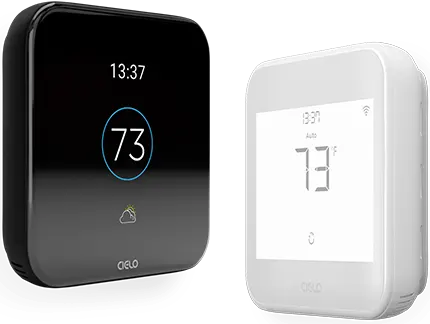
2. Hybrid Split Systems
As the name suggests, these systems switch between electricity and gas power as per requirement. They operate similarly to the split system but use less energy due to their hybrid functionality.
When there is a need for heating, the furnace turns on and uses a different source of fuel, such as natural gas or oil, to produce the heat. This heats up the air, which is then routed through the system of ducts by a blower fan.
When there is a need to cool, the air conditioning system powers on and takes over, delivering cool air to different parts of the home. Furthermore, hybrid split systems can save on your electricity bills in the longer term by minimizing energy usage.
3. Ductless Mini-Splits

Ductless mini-splits are fast becoming popular due to their ease of installation – they do not need any ductwork to cool or heat your home. Further, the lack of ducts eliminates the possibility of duct-related energy loss. The latest models provide heating and cooling, packaged all in one. They are a highly efficient system, perfect for small areas.
Ductless mini-splits consist of an indoor unit that is unusually mounted on the wall and an outdoor unit placed outside on the ground or attached to the wall. Both units are connected through a small pipe. The indoor unit works similarly to the evaporator unit of a central AC system. It pulls heat from the room and transfers it to the outdoor compressor unit. This process is reversed in winters to heat the home.
There are many different types of mini-splits available in the market, such as wall-mounted mini-splits, floor-mounted mini-split, multi-zone mini-split, ceiling cassette mini-split, and concealed duct mini-split.
Your best choice to make any mini-split, window,
or portable AC smart. Enhance your comfort and savings.
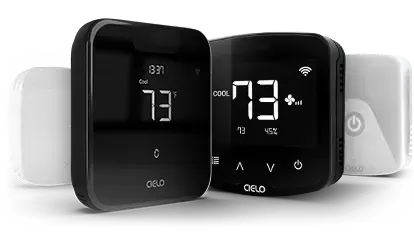
4. Packaged HVAC Systems
In these systems, all the components, condenser, compressor, and evaporator are packaged in one unit. They are usually kept outside beside the wall or in the attic.
The packaged systems contain a blower to force cool/hot air into the home and draw untreated air into the unit. The ductwork is used to circulate the air from the air handling unit into the house, and it also distributes it back.
They are less energy efficient than other air conditioners but are suitable for homes with less space.
5. Geothermal HVAC
Homeowners in the US prefer geothermal systems because they are eco-friendly – they do not use fossil fuels and are more energy-efficient than traditional HVAC systems. They also help reduce the electricity grid load, especially during peak hours in summer.
Geothermal heating and cooling systems provide heating and cooling by exchanging heat with the ground. During summers, it transfers heat from your house to the ground and vice versa in winters. It can do that using long pipes laid underground, which are filled with a cooling refrigerant. In addition, the loops are hooked to a heat pump in your home, which acts both as a furnace and air conditioner.
Difference Between HVAC & Air Conditioning
An HVAC system is designed to meet the heating/cooling requirements in your home. Moreover, it also provides ventilation to maintain the air indoor air quality. The heating aspect in an HVAC system is provided by a dedicated heating unit, such as a furnace. HVAC systems are designed to keep fresh air in your house and remove pollutants, dust, and allergens.
On the other hand, AC mainly refers to systems that can only provide the function of cooling or heating but not of ventilation. Generally, air conditioning is used only for the cooling function, but that is not the case. When operated in reverse, they can also heat the room. An air conditioning system does not have a furnace or a ventilation system associated with it.
While all HVAC systems provide the function of air conditioning, not all air conditioners offer dedicated heating and ventilation functions.
How Much Is a New HVAC System?

An HVAC system cost varies depending on the unit’s type, size of the unit, maintenance costs, and installation cost, which can increase in the case of ductwork installation. Moreover, an HVAC unit that is more energy-efficient and has a higher cooling capacity will cost more.
For central air conditioners, you can expect to pay $3,811 to $7,476. Ductless mini-splits cost around $2,000 to $14,500, averaging about $3,500, including the installation costs. Window air conditioners are priced from $150-$1,000, including the installation costs. Further, a portable air conditioner is priced from $250-$700.
Buying an HVAC unit is a costly investment, so do thorough research before making a decision.
What Is a Smart HVAC Unit?
A smart HVAC unit, like any other smart device, has the ability to connect to the internet. This allows you to have a range of controls and remote access to your air conditioner that does not come with a traditional remote control.
By connecting your smartphone to your smart HVAC unit, you can use your AC using your smartphone from anywhere, anytime. You can even connect your smart HVAC to a smart home system like Google Home or Amazon Alexa, and your air conditioning unit will work in conjunction with all your smart devices.
However, smart air conditioners are very costly. They can range from $300-$3,000 or even more. Here’s a list of the best smart air conditioners for you.
Furthermore, if this seems way out of your reach, then we bring you a piece of good news. You can make any conventional air conditioning unit smart. How? Let’s find out!
How Can You Make Your HVAC Smart?

If you want automation and more flexibility with your HVAC system, consider making your unit smart.
For ductless mini-split, portable, or window air conditioners, you can choose smart AC controllers. For ducted systems, you can invest in smart thermostats. By pairing your conventional HVAC unit with these smart devices, you’ll get all controls that a smart AC has to offer.
These devices are not just limited to temperature and humidity controls. They can let you do a lot more!
You can monitor your AC usage, set weekly schedules according to the weather forecast, or link them with your smart home system. Moreover, you can change your AC settings from anywhere in the world using just your smartphone.
With these smart devices, your HVAC system cools/heats when it needs to, minimizing energy wastage. This feature can help you in reducing your electricity bills over time.
Benefits of Having a Smart HVAC Unit
However, if you still feel like your AC’s remote control gives you enough setting options and what other benefit a smart HVAC unit will offer, let’s take a quick look at some of them.
- You can control your air conditioning unit from anywhere in the world. Forget to turn it off before leaving for work? Gone out for grocery and have pets at home? Are your kids sleeping in the house while you’re away? Or went on a vacation but worried about freezing pipes? All of these problems can be solved as you can access your AC unit through an app.
- You can create zones using a smart controller and control the temperature of different rooms as per individual needs instead of keeping the temperature at one set-point.
- With summers arriving and temperatures increasing day by day, are you already setting a budget aside for AC costs? Well, with a smart HVAC unit, you can save an ample amount of energy. And if you have a smart controller, then you can save as much as 25% of energy.
- The efficiency of your air conditioning unit will be increased by manifolds. It’ll turn on and off before you arrive and after you leave on its own. You won’t ever have to come back home to a hot, humid environment. It’ll always be maintained on your preferred stings.
- Smart air conditioning units also help reduce your carbon footprint by running intelligently throughout the day.
Moreover, read this article to learn in detail about the benefits and features of a smart HVAC unit.
How Long Do HVAC Systems Last?
HVAC systems typically last 10 to 15 years, but it greatly depends on the type of system and other factors like maintenance, size, usage, and climate, and so on.
However, poor maintenance can significantly accelerate wear and tear and can dramatically shorten the lifespan of your unit. Oversizing can make your system turn too quickly, leading to motor failure. Similarly, under-sizing can make your unit work harder, reducing its life. Moreover, HVAC units installed in the coastal areas tend to have a shorter lifespan as regular salt exposure increases corrosion.
With regular tune-ups, using a clean air filter, and decreasing your AC’s load, you can help extend your unit’s life.
Tips for Maintaining Your HVAC Unit
There are specific HVAC maintenance tips that you can employ to prolong your system’s life while also ensuring that it keeps performing optimally. Read on to find out!
- The cleanliness of your air filters should be your primary focus. Moreover, you should clean your HVAC unit’s air filter every month and keep a constant check in summers and winters when the system runs for a more extended period. Dirty air filters lower your unit’s efficiency and waste energy, resulting in higher bills.
- Dirt particles, leaves, and twigs can suffocate your outdoor unit and prevent it from functioning properly. Be sure to clean the debris collected around the unit.
- Make a habit of checking your thermostat weekly. It should be calibrated correctly for optimum function and to minimize energy wastage.
- Your condensate drain line can get clogged over time due to high moisture build-up, which inhibits your system from adequately removing humidity from your house. So, be sure to keep your condensation line clear.
- It is highly important that you schedule regular tune-ups for your HVAC system. A typical HVAC maintenance service will include thoroughly cleaning the coils and lubricating the moving components. This will help in reducing wear and tear. During the inspections, the technician will also see how the other parts are functioning and will adjust them as needed.
Now that you understand all about your HVAC systems, their various components, and types, you will be better prepared to maintain your system. Determine the cause when an HVAC-related problem arises, and make an informed decision when the time comes to invest in a new unit.
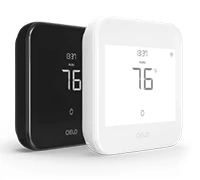

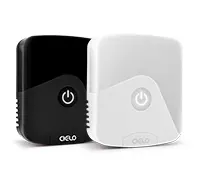
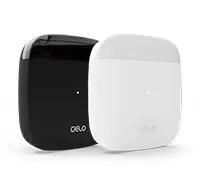


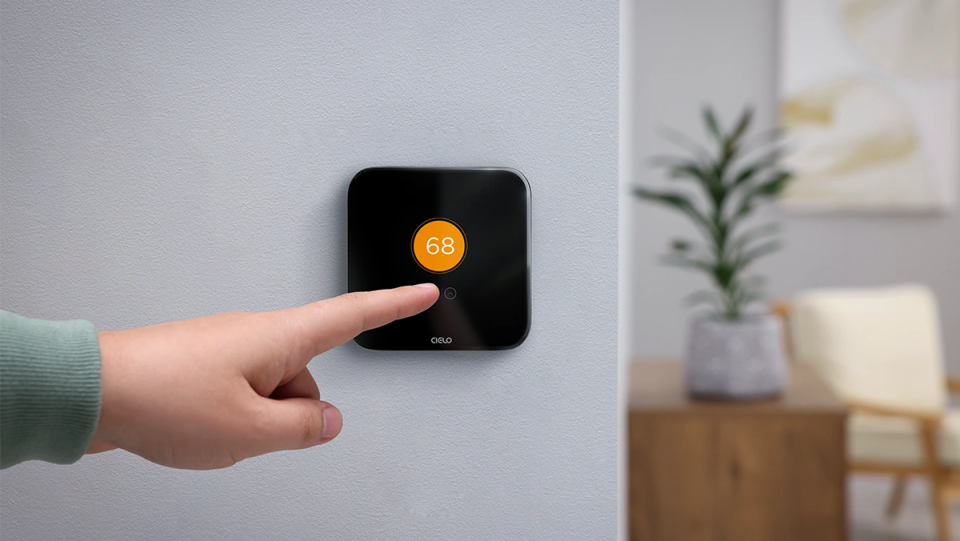

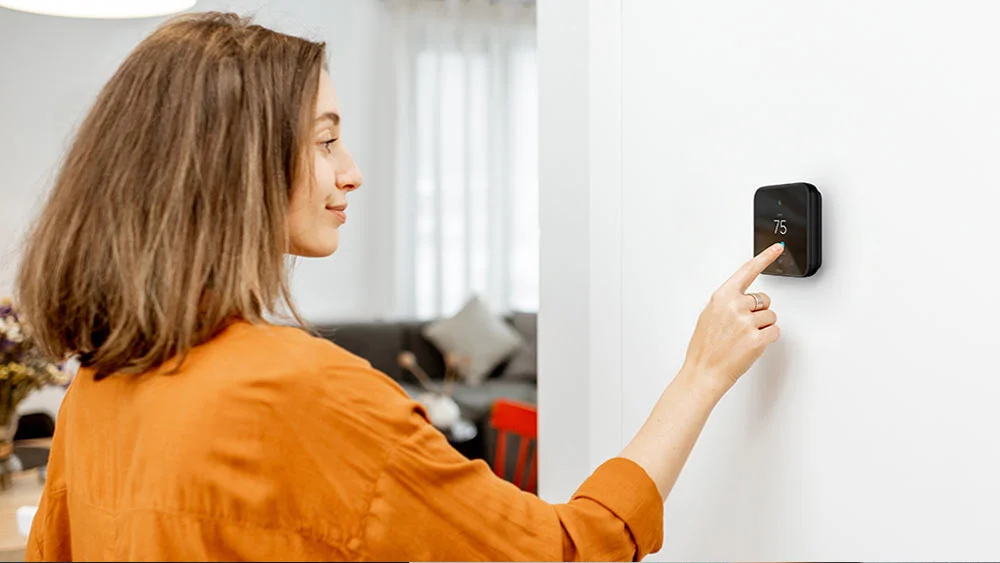
2 Comments. Leave new
Great article! I appreciate how you simplified HVAC complexities. Interestingly, proper maintenance can extend their lifespan to 15 years. I’m considering a smart HVAC unit for my vacation home due to its energy efficiency and convenience. Thanks for the valuable info!
This is such a comprehensive article and I will note that HVAC systems can actually for as long as 15 years with proper maintenance. I am looking this up since I’m choosing systems to install in the vacation home I am having built. I think I’ll just consider having this type of system since parts for a common system would be easier to find.